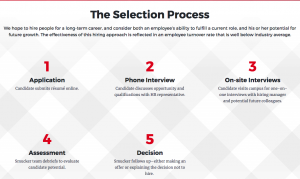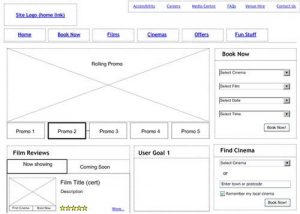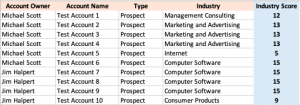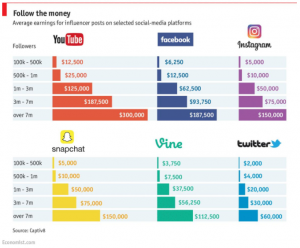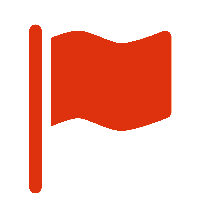
Have you and your business maximized the potential of the Facebook platform with a Facebook Landing Page?
This article will discuss why a Facebook Landing Page is becoming increasingly essential, how to create a Facebook Landing Page and give you the 5 essential parts of an optimized landing page.
Let’s get started!
How to Create a Facebook Landing Page
Facebook Landing Pages are currently only available through a 3rd party provider, but they’re well-worth the investment.
Any Post or Facebook Ad will result in higher end conversion rates if users are sent to a Facebook Landing Page before they’re sent off-platform.
Why?
Because Facebook users scare easily. They don’t like being directed to your website without being aware of it. Even if they are interested in your product or service they’ll bounce simply because they weren’t necessarily expecting to be sent off the platform.
Landing Page tabs are also incredibly valuable for their ability to generate Facebook Fans and increase your brand profile on the platform. But James, (you ask) how do they do that?
Well, hypothetical reader, they do it through the power of a Like Gate.
What’s a Like-Gate?
Like-Gates require Facebook users to Like your page in order to continue down your sales funnel. They’re often associated with campaigns and contests, but can just as easily be used for lead generation and more.
A Like-gate is usually a simple image with text telling users who have not yet Liked your Facebook Page that they need to do so in order to access the contest, entry or valuable piece of content you’re offering on your Facebook Landing Page.

They’re awesome because they incentivize Liking your Facebook Page but they do so completely within Facebook’s guidelines, and (so long as your prize or valuable content is business related) they get you Facebook Fans who are genuinely interested in your business.
The 5 Parts of an Awesome Facebook Landing Page
1. A Clear Value Proposition or Unique Selling Point (USP)
No matter where you’re generating traffic for your landing page, your page needs to communicate value in order to drive traffic. You have to convince visitors that engagement and conversion on your page is worth it.
USP or Value Prop best practices are:
- Dollar values – clearly showing what a page visitor stands to gain from engagement
- Percentage signs – showing the value of your discount
- Exciting words – consider “Free”, “Win”, “Getaway”
- Exclusivity – Create a time constraint using “this week only” or “Facebook-exclusive”
Here’s an example from Costco’s Facebook Landing Page:

This USP has it all for me: exclusivity in both “Online-Only” and the subheader “valid through…” as well as a dollar amount and large font that contrasts with the page’s color scheme to draw the eye and keep it there until value is communicated. Awesome job, Costco.
And here’s a poor example of a USP or value prop (from Nescafe’s “product” Facebook landing page:

While the message itself isn’t that bad, the font blends into the background far too much or many visitors to quickly and easily see it.
Not only should value be quickly communicated with a sexy USP or value prop with dollar values or percentage symbols, but that communication needs to be clearly delivered – something Nescafe has missed in this example.
2. An Eye-Catching Image
Your Facebook Landing Page needs an image that grabs the eye and keeps it there long enough for your USP or value prop (above) to do their work.
The image is usually the first thing that the eye falls upon when a Facebook user arrives on your landing page. An unappealing image or no image at all will cause a user to bounce far more quickly than a bad USP.
To a large extent, the effect of an image is subconscious. People respond positively to seeing other people – especially people who they can relate to. Models, studies show, can actually impact negatively on a landing page’s conversion rates.
People also respond subconsciously to color: blue and green are calming, red is exciting (actually increases the heart rate), and black, white and grey are sophisticated. Keep these general rules of thumb in mind when choosing your Facebook Landing Page image.
Here’s an example from Salesforce’s Facebook Landing Page:

This image works well with their value proposition (“win… a getaway”). People see a rising airplane and understand a symbol of ‘escape’. The red and white against a clean blue sky is also visually appealing in terms of color. Kudos, Salesforce.
3. A CTA they Want to Click
Your Facebook Landing Page’s CTA needs to stand out from the rest of the page. I’m talking contrasting color, size, text, and an eye-catching button.
Encapsulation (the act of putting a button or border around something) is hugely important in landing page optimization.
Here’s a great example from Salesforce:

Note the difference between the link to “Terms and Conditions” and the CTA button “Lift Off”. While both are links, the encapsulation, color contrast, and intriguing language encourage a click-through far more on the CTA than the other.
I also like Salesforce’s choice of language. “Lift Off” is a bit different and far more exciting than the typical “enter here” or “submit”. While this is definitely a detail many marketers might think would be inconsequential, I’d wager a week’s salary that changing this text to “submit” would actually decrease conversion rates by as much as 15%.
Here’s a poor example from Lowe’s Home Improvement:

“Sign Up” on the right side is this landing page’s CTA – encouraging Facebook users to register to receive offers, how-tos and tips via email (standard lead gen). While they have employed encapsulation, the CTA button still doesn’t stand out enough from the rest of the page for a visitor to obviously see it, know what the page’s “Ask” is, and engage with it.
This is especially true because there is actually another button (“Ask Lowe’s”) below the page’s CTA, and, though I haven’t shown it here, this will also be reducing conversions on the page.
It’s important to your Facebook landing page’s success that you only focus on a single “ask”, otherwise you’ll dilute your page’s end results.
4. An Entry-Form that Doesn’t Make them Bounce
Entry-form optimization can be the most finicky part of the whole Facebook Landing Page business. It’s essential to your business’ lead generation campaign that you get enough information out of Facebook users that you can efficiently and successfully nurture that lead toward a sale. However, it’s also essential that you don’t ask too much of your possible leads that they bounce without completing the form.
This little entry-form dance is based around how much a lead’s information is worth to them, and how much value you’re providing.
If all you’re offering is a chance to enter to win a contest, I recommend asking for nothing more than an email address (you can always get more information out of them later).
However, if you’ve created a Facebook Landing Page promoting an email-gated ebook, you’re offering a little more value (at least up front). This means you can ask for a little more in return, say, a zipcode or company name – something that allows you to segment more successfully in communication down the line.
Here’s an example from Sony’s email subscription form:

I’d be interested to see the effect that removing the “zip code” request would have on this page’s conversion rates. Given that all Facebook users are getting from Sony is ‘email updates’ (something more and more internet users are recognizing is code for promotional emails), I think removing the location “ask” would actually decrease bounce rates.
I’d also be interested to see what effect changing the CTA button copy would have. “Submit” is a bit aggressive. I’d test “Get the Scoop” instead and change the subheader copy to “sign up for Sony email updates today!”
5. The Fine Print
When running any online promotion or generating lead information from Facebook, you need to provide traffic with the essential fine print or they’ll bounce. Before they give you an email address, you need to make it clear that you don’t sell or rent personal information.
You also need to give the small-print of your promotion. How will you choose the winner? How do they submit or enter? How long is the contest and is there a deadline for entry?
While this stuff won’t necessarily be read by every visitor to your Facebook Landing Page, there are those few Facebook users who do care about this kind of thing. Those few will refuse to enter (even if they’re interested in your content, prize, or product), simply because you’ve neglected to assuage their fears with a few small lines of text.
Here’s an example from TravelBIG’s Facebook Landing Page:

One More Thing: Match Up your Facebook Landing Page with your Ad and Website
Cohesion and repetition are the fundamental pillars of a working promotional campaign. When spanning multiple platforms (blog, website, social, etc), it’s essential that people know they’re still within your company’s online world.
- Match the color scheme of your Facebook Ad with the colors of your Facebook Landing Page and corresponding website page.
- Keep your value proposition or USP the same
- Make sure your images match up: not necessarily the same image, but definitely in the same vein or style
- Keep your tone consistent: If your landing page tone is excited, or even humorous, don’t switch to serious and professional when the visitor gets to your website landing page. This can subconsciously affect the chance of a internet user’s conversion.
Conclusion
Hopefully that’s given you a solid base for creating your own Facebook Landing Pages.
Remember that not all providers will be able to show you your page’s conversion details, so shop around before deciding on the right tool for you or your business.
By James Scherer
Read more on Business 2 Community
(680)
